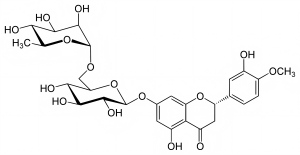Hesperidin: A Review on Extraction Methods, Stability and Biological Activities

Hesperidin is a citrus bioflavonoid widely distributed in fruits such as oranges, lemons, and grapefruits. Known for its antioxidant and anti-inflammatory potential, hesperidin has been a subject of extensive research due to its promising pharmacological and nutraceutical properties. As consumer demand for natural compounds grows, understanding the extraction techniques, stability parameters, and biological activities of hesperidin has become increasingly important for both scientific and industrial applications.
Extraction Methods of hesperidin have evolved from conventional solvent-based techniques to more advanced and sustainable approaches. Traditional methods, such as Soxhlet extraction and maceration, often involve the use of ethanol, methanol, or water as solvents. However, these approaches can be time-consuming and require large solvent volumes. Modern innovations, including ultrasound-assisted extraction, microwave-assisted extraction, and supercritical fluid extraction, offer higher yields, reduced processing times, and improved selectivity. The choice of method is often influenced by the source material, desired purity, and intended application in pharmaceuticals, food supplements, or cosmetics.
The stability of hesperidin is a critical factor in ensuring its effectiveness in formulations. Environmental conditions such as light, temperature, and pH can significantly affect its molecular integrity. Studies have shown that hesperidin is relatively stable under acidic conditions but prone to degradation in alkaline environments. Encapsulation techniques, such as nanoemulsions, liposomes, and polymer-based carriers, have been employed to enhance stability and improve bioavailability. These advancements not only protect hesperidin from degradation but also optimize its delivery in functional foods and therapeutic preparations.
Research on the biological activities of hesperidin highlights its multifunctional role in promoting human health. It exhibits strong antioxidant capacity by scavenging free radicals and reducing oxidative stress. Additionally, hesperidin demonstrates anti-inflammatory, antihypertensive, and lipid-lowering effects, making it valuable in cardiovascular health management. Its neuroprotective properties suggest potential in mitigating age-related cognitive decline, while its antimicrobial activity broadens its relevance in food preservation and pharmaceuticals. Ongoing studies continue to explore its influence on metabolic pathways, immune modulation, and cancer prevention, further supporting its significance as a bioactive compound of clinical interest.
Overall, hesperidin stands out as a natural compound with diverse therapeutic benefits. The refinement of extraction techniques, strategies for improving stability, and growing evidence of its biological functions collectively reinforce its value in nutraceutical, pharmaceutical, and functional food industries.


